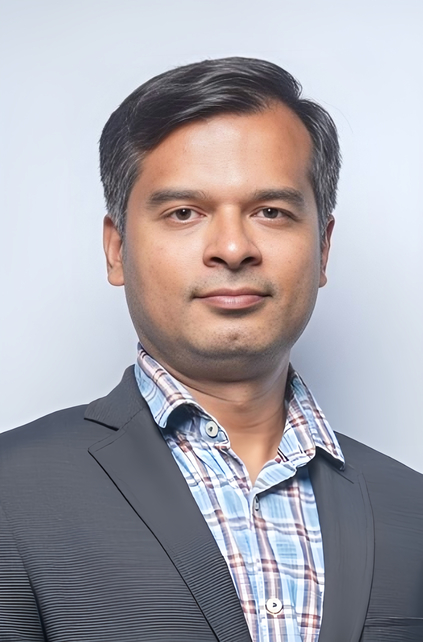Bio
Cell Biologist with 19 years international research experience in redox signaling, solid/liquid tumors and immunology with advanced techniques, resulting in high impact international peer reviewed research publications. Hands on experience in drug screening, high content imaging, phenologic analysis, high throughput gene expression analysis and target validation in vitro and in vivo for translational research. Use of advanced image based informatic tools for biological research. Strong project management skills. Experience in teaching post graduate and undergraduate biomedical sciences programs. Designing course work, university administration, member of innovation council. Training research staff, graduate students resulting in completion of projects/publications in time and budget bound manner.
Educations
1. Dr.rer.nat; Cancer Biology 2009 University at Cologne
2 Msc; Human Genetics 2001 SRIHER (DU)
3 Bsc; Zoology 1999 University of Madras
Research Interest
Projects
Role of Tumor Derived Heme in Cancer Progression
Inflammation is the key determinant in the cause and progression of both infectious (bacterial, viral infections) and non-infectious diseases (cancer, auto-immune disorders). Understanding and exploiting the overlapping signaling mechanisms governing both states is crucial in designing effective therapeutic strategies. Heme metabolism is a key determinant of both cellular states, where in it gives tissue protection during acute inflammation following infection, whereas its unfavorable during anti-cancer treatments (chemotherapy, radiotherapy or targeted inhibitors). Ideally, heme accumulation in the tumor tissue leads to oxidative stress and immunogenic cell death, however, heme oxygenase-1 (HO-1) detoxifies heme leading to prolonged survival. Hence, it becomes pre-requisite to study the heme metabolism pathways to find unique targets in the tumor states for effective treatment.
Funded by DBT: 2024-2027
Cold Atmospheric Plasma Device For Chronic and Acute Wounds
Bacterial infections or their biofilms in diabetic foot ulcer (DFU) are a key cause of drug-resistant wounds and amputations. Cold atmospheric plasma (CAP) is well documented for its antibacterial effect and promoting wound healing. In the current study, we built an argon- based, custom CAP device and investigated its potential in eliminating laboratory and clinical bacterial strains derived from DFU. The CAP device performed as expected with generation of hydroxyl, reactive nitrogen species, and argon species as determined by optical emission spectroscopy. We are in process of advancing the prototype from TRL3 to TRL7.
Funded by AICTE: 2024-2025
Translating Cold Atmospheric Plasma Technology for Effective Management of Infectious Wounds: From Bench to Bedside
In India, the rise of antibiotic-resistant microbes in wounds presents a critical challenge in wound care, causing persistent inflammation and complicating treatment. To address this, nonchemical methods like Cold Atmospheric Plasma, using ionized gases such as helium and argon, offer a promising solution. Cold Atmospheric Plasma can eliminate bacteria without harming human tissues and promote wound closure. While Cold Atmospheric Plasma is utilized in the West, its application in India has limited investigations. Novelty This study marks the first of its kind in India, aiming to establish a foundation for a Cold Atmospheric Plasma based medical device to treat infectious wounds. We’ve developed a functional TRL4 Cold Atmospheric Plasma device to investigate the effects of different gas combinations on wound derived bacteria. Objectives 1. Identification Optimal Cold Atmospheric Plasma Parameters For Bacterial Elimination 2. Validation of Cold Atmospheric Plasma Parameters for Efficacy and Safety. 3. Advance The Development Of The Cold Atmospheric Plasma Medical Device For Clinical Application. Methods We will employ various microbiological models to assess the effectiveness of different feed gas mixtures in microbial inactivation, both in vitro and ex vivo. Additionally, in vivo studies in rat models with infected wounds from diabetes and burns injuries will be conducted to evaluate the efficacy and safety of these Cold Atmospheric Plasma gas combinations. Expected Outcome: We will identify safe and optimal Cold Atmospheric Plasma parameters for eliminating clinical strains in vitro and in vivo. We will upgrade the CAP device for human clinical applications. Intellectual property rights will be generated for further commercialization
Funded by ICMR: 2025-2027
Awards & Recognitions
MedTech Hackathon Award 2022
First prize winner at the SRIIC MEDTECH HACKATHON 2022 organized by BIRAC and SRIIC
News
Membership
Associate Member at Society of Free Radical Research and Biology (sFRBM), USA
The Society for Redox Biology and Medicine (SfRBM) provide solutions to global health challenges by advancing research and applications of redox biology. It Empowering scientists, health care professionals, and trainees through:
- Advancing world class science to promote wellness and transform patient care
- Development and use of cutting-edge technologies to facilitate research discovery and impact
- Supporting and educating the next generation of scientists
- Fostering a collaborative environment inclusive to all
Associate Member at Center for Mitochondrial Medicine UT Health San Antonio, USA.
Center for Mitochondrial Medicine, where cutting edge research meets unparalleled expertise. Our Center is a hub of innovation, bringing together multiple leaders in the fields of ion channels, mitochondrial medicine, signal transduction and translational medicine. With a team of esteemed assistant, associate and full professors, we are at the forefront of multidisciplinary programs in molecular and cellular biology, biochemistry, biophysics, genetics and epigenetics.
SFRR-India Life Membership
The major aims and objectives of SFRR-India is to promote research on free radicals and antioxidants with particular reference to medical and industrial importance for the benefit of mankind. Towards these objectives it is the duty of the society to organize conferences and workshops in the national and international levels, educating policy makers and programme planners, educating health professionals and informing the public. This helps in promoting interaction between scientists working on related areas within and outside the country. It also helps to bring people working in all the five continents under one umbrella in India for the benefit of Indian scientists and research workers.

